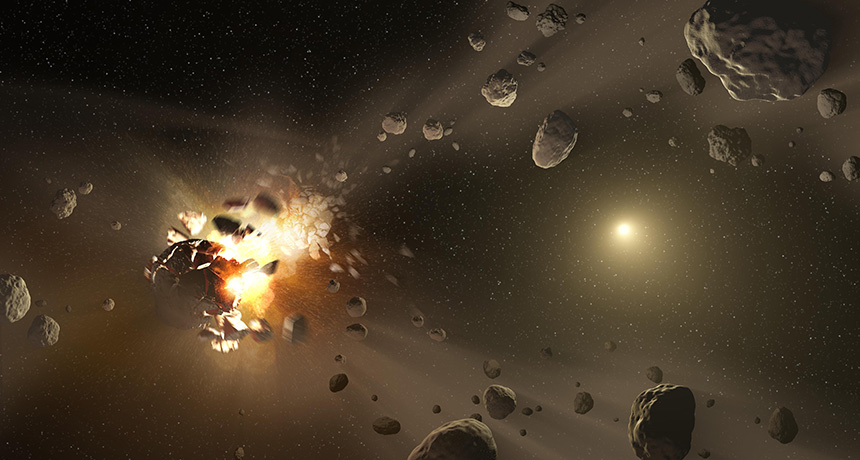The solar system’s earliest asteroids may have all been massive
A new analysis offers new clues to how planetary building blocks form

ALL IN THE FAMILY By identifying the wreckage of past asteroid crashes (illustrated) known as asteroid families, astronomers can ignore those fragments and pick out asteroids that have remained intact since the early solar system.
JPL-Caltech/NASA







